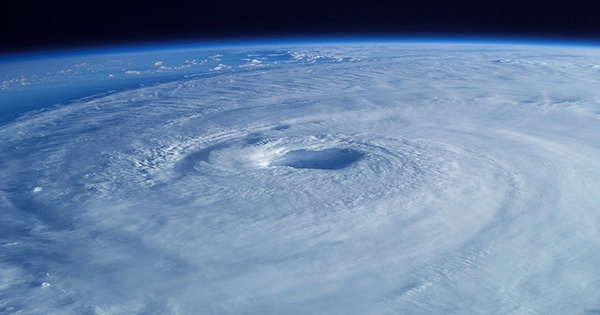In comparison to hazards like massive volcanic eruptions or tsunamis, tropical cyclones, often known as hurricanes in the Atlantic, are among nature’s most destructive events. Therefore, it makes sense to consider concepts that would make them artificially harmless. However, modeling of one such concept demonstrates how unworkable it is, with consequences for substitute plans.
The most well-known plan to combat hurricanes may have been the one that then-President Trump repeatedly urged using nuclear weapons to deflect threats away from the American east coast in 2019. The majority of people understood that it might not be desirable to feed lethal doses of radiation into a massive, swirling vortex where it might end up wherever. Additionally, meteorologists noted that it would be impossible.
Hurricanes are weaker after they approach land or cooler ocean regions because they feed on warm seas. Some have proposed artificial ocean cooling as a means of reducing their destruction in light of this. Before a cyclone hits, stirring up cool water from tremendous depths avoids the disastrous repercussions of utilizing lethal force. However, a report published in Communications Earth and Environment demonstrates that it is also unworkable.
Before a hurricane went over, Dr. James Hlywiak and Professor David Nolan of the University of Miami simulated the results of chilling 21,000 cubic kilometers of water by 1 degree Celsius (1.98 degrees Fahrenheit). That is 260,000 km2 (100,400 square miles), and the stratum that hurricanes get their energy from is 80 meters (260 feet) below the surface. Although the simulated hurricanes were substantially weakened by the lower temperatures, it was only by 15% under ideal circumstances.
Residents of cities that have seen significant storm surge, rainfall, and wind damage from hurricanes may think it is worthwhile. Hlywiak and Nolan, however, came to the conclusion that it would necessitate extracting 100 times more energy from the top ocean than the United States uses in a year.
The key finding of our study is that enormous quantities of artificially cooled water would be required for only a slight waning in storm energy prior to impact, according to a statement from Hlywiak. Additionally, just because the intensity is slightly lessened doesn’t mean that there will be less chance of inland damage or safety issues.
Any weakening before landfall is beneficial, said Hlywiak, but enhancing infrastructure and evacuation protocols has far greater advantages.
“I could have told them that, where’s my research grant,” some readers may be thinking. Nevertheless, Nolan pointed out that “a number of suggestions for hurricane modification occur frequently in popular media and are even submitted for patents.” Even a research program on comparable concepts was run for two decades in the United States. A precise rejection that may be cited in the future might help people concentrate more on practical solutions.
Encourageing hurricanes to turn so they stay at sea or hit less populous land regions are slightly more tenable options. Conspiracy theorists occasionally assert that this is already the case, with governments already deciding which cities would suffer.
If this were to actually occur, the results could be disastrous: even if it resulted in fewer fatalities overall, tiny nations might not appreciate having hurricanes diverted in their direction by larger neighbors. Because of this, it’s probably fortunate that issues similar to those Hlywiak discovered do occur. Because hurricanes require such enormous quantities of energy, altering their trajectory is currently and in the foreseeable future beyond our control. The same is probably true of a great deal of other geoengineering theories.
There is ongoing discussion over how global warming affects hurricanes. They obviously have more force as the sea surface temperature rises, but a warmer planet also likely has higher wind shear, which prevents the development of the waves. It can be difficult to determine how these two interact, but it is wise to prevent the waters from becoming overheated in the first place.














